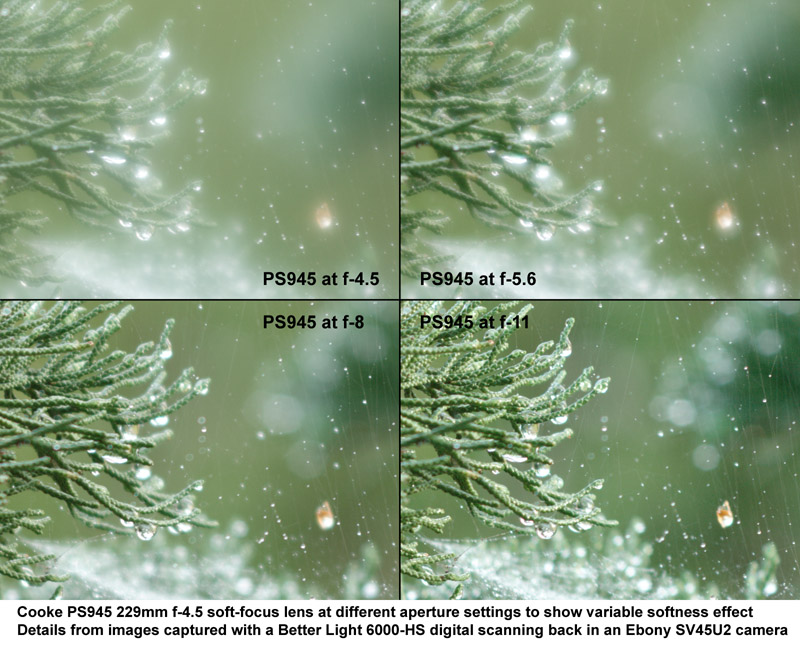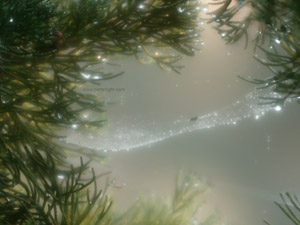 |
||
 |
|
|
| by Mike Collette, founder of Better Light | ||
|
This updated remake of a classic Pinkham & Smith pictorial lens shows off beautifully
in front of a Better Light digital scanning back! |
||||||||||
|
UK-based Cooke Optics (www.cookeoptics.com) has re-created this legendary optical design in their recently-introduced PS945 soft-focus lens, complete with the original aspheric elements, but with modern coatings to improve color and reduce internal reflections. These limited-production lenses are more expensive than typical large-format optics, but offer some unique options for the discerning photographer. One factor driving price is the relatively large maximum aperture of f-4.5 for a 229mm lens, requiring substantial elements and a Copal 3 shutter. However, examining a few images from this lens quickly renders price secondary to less tangible qualities it offers, quite literally unlike anything one has seen before. The following is from Cooke’s description of the PS945: "The original Pinkham & Smith lenses achieve their distinctive soft focus in a manner different from other lenses. Using the traditional glass available at the time, craftsmen hand-corrected multiple surfaces of the lenses to achieve their unique soft focus look. The introduction of aspherical surfaces gave Pinkham & Smith lenses a higher-order spherical aberration that results (when the lens was used fully open) in an image with both very high resolution and a self-luminescent quality. Cooke has reproduced the unique performance of these hand aspherized lenses using modern design techniques that duplicate this unique soft yet high-resolution performance exactly.” Most photographers understand that the high resolution of Better Light’s large-format digital scanning backs can deliver sharply detailed images, but not as many realize that the wide dynamic range and low noise of these unique image capture devices also make them perfect for rendering softer images with subtle gradations. The combination of a high resolution digital back with a soft-focus lens might at first seem improbable, but in many ways these unique optics have never looked better. Using wide aperture settings also lets more light into the camera, allowing fast scan times at low ISO settings, for optimum results.
“BACKYARD
IN RAIN” – (at left and below ) was
captured during
a light rain
one evening in
January, which
is why there
are no leaves
on the birch trees. The camera’s
plane of focus
was placed along
the foreground
light post and
nearest corner
of the gazebo
by using appropriate
front swing.
Most of the original
image (shown
at left) was
very dark when
the light fixtures
were properly
exposed, suggesting
that I missed
the optimum time
for this photograph.
However, I was able to selectively brighten things
up by several
f-stops without
introducing much noise (below). The overall image
below exhibits
a dreamy softness
in its out-of-focus
background, with a halo of diffusion around bright
objects everywhere
in the scene.
|
||||||||||
|
||||||||||
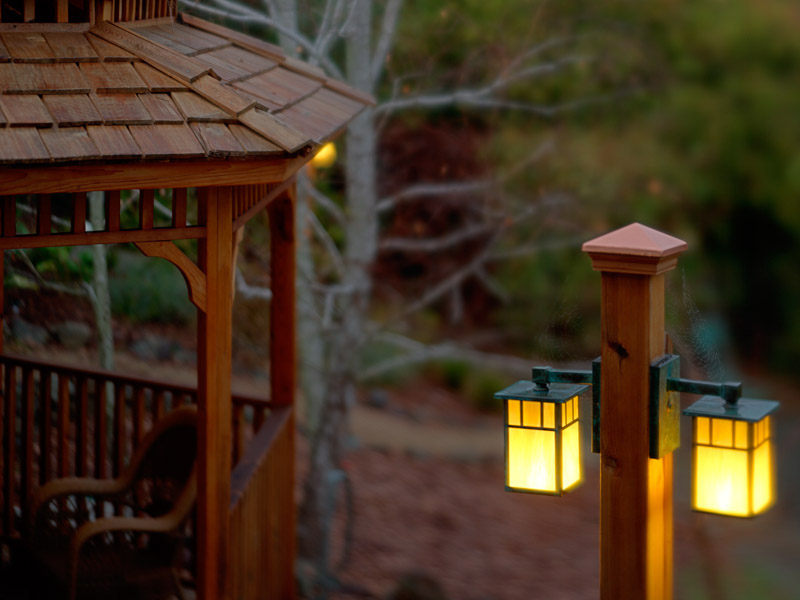
|
||||||||||
|
||||||||||
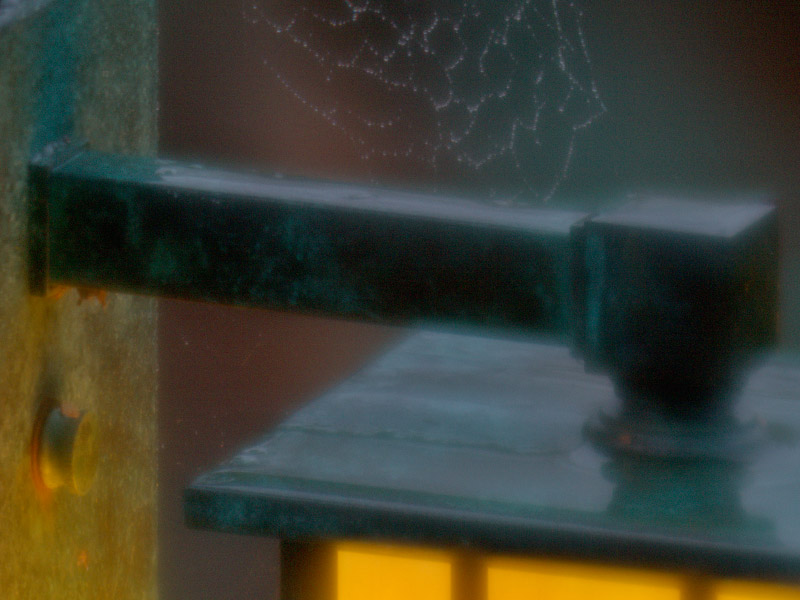
|
||||||||||
|
||||||||||

|
||||||||||
|
||||||||||
|
||||||||||

|
||||||||||
|
||||||||||
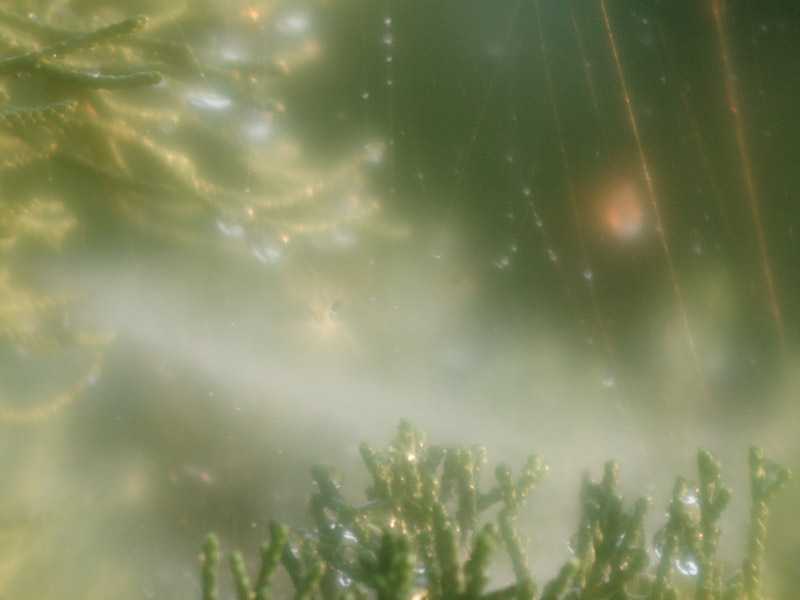 |
||||||||||
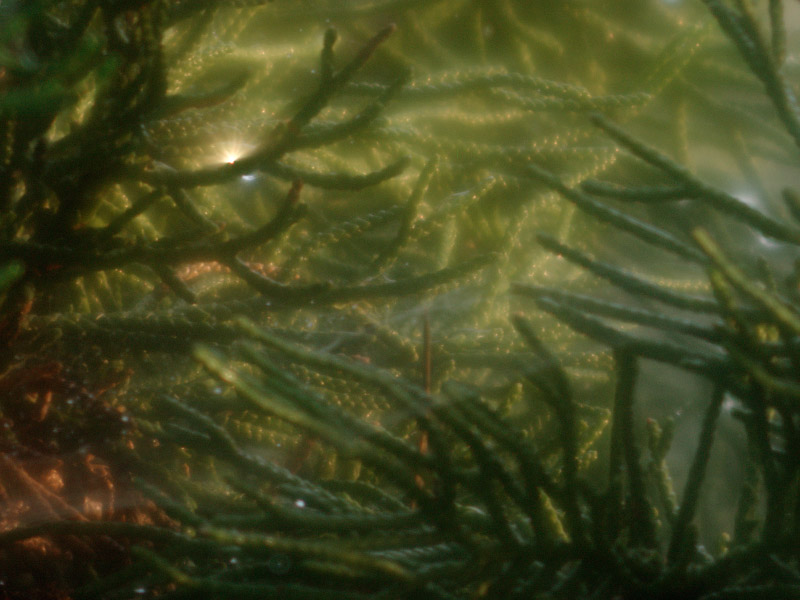 |
||||||||||
 |
||||||||||
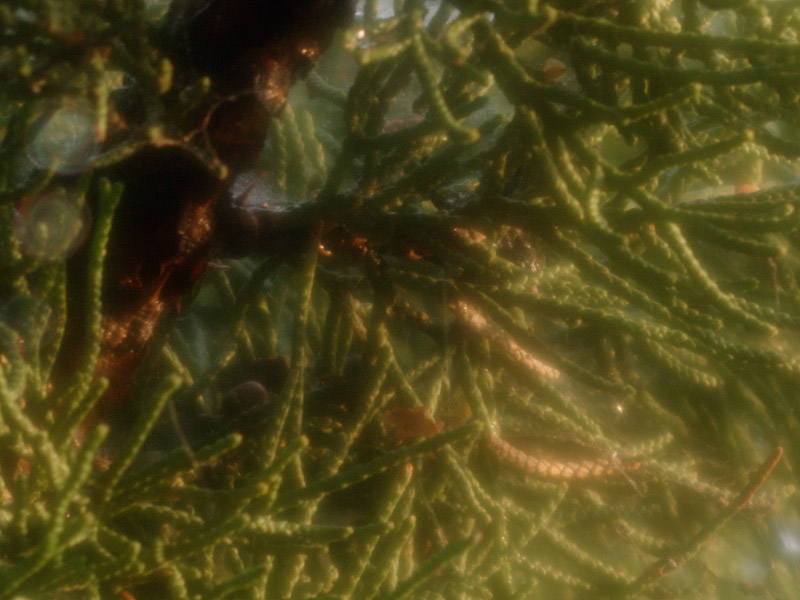
|
||||||||||
|
||||||||||
|
||||||||||
|
||||||||||
|
||||||||||
|
To SAVE images
on Windows, right-click on the link to image and then select "Save Target As..." (NOT "Save
Picture As...", which only saves
the picture currently displayed). On Macintosh, press Control and Click to reveal menu and select "Download Image to Disk". |
||||||||||
|
|
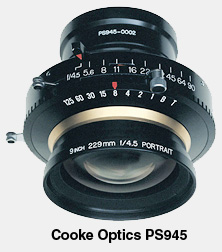 Photography
Photography After some delay while waiting for another batch
of Copal #3 shutters
to be produced (!), Better Light recently took
delivery of Cooke PS945 serial
number 0058. Here are a few initial
test shots using this
lens at its widest aperture setting,
where it produces the most pronounced
soft-focus effect. A model 6000-HS captured
these images at its full
resolution of 6,000 x 8,000 true RGB pixels,
generating uninterpolated 274
Mbyte 48-bit files fairly quickly, thanks
in part to the wide lens
aperture. The examples on this page are
each 600 x 800 pixels in size,
so the overall 6,000 x 8,000
pixel image would be ten times
larger in each direction. On a computer
monitor with 100 pixels per inch
(a pixel pitch of 0.25mm), each full-resolution
image section should
be displayed at about the same size that it
would appear in a 60 x 80 inch
print of the overall image.
After some delay while waiting for another batch
of Copal #3 shutters
to be produced (!), Better Light recently took
delivery of Cooke PS945 serial
number 0058. Here are a few initial
test shots using this
lens at its widest aperture setting,
where it produces the most pronounced
soft-focus effect. A model 6000-HS captured
these images at its full
resolution of 6,000 x 8,000 true RGB pixels,
generating uninterpolated 274
Mbyte 48-bit files fairly quickly, thanks
in part to the wide lens
aperture. The examples on this page are
each 600 x 800 pixels in size,
so the overall 6,000 x 8,000
pixel image would be ten times
larger in each direction. On a computer
monitor with 100 pixels per inch
(a pixel pitch of 0.25mm), each full-resolution
image section should
be displayed at about the same size that it
would appear in a 60 x 80 inch
print of the overall image.